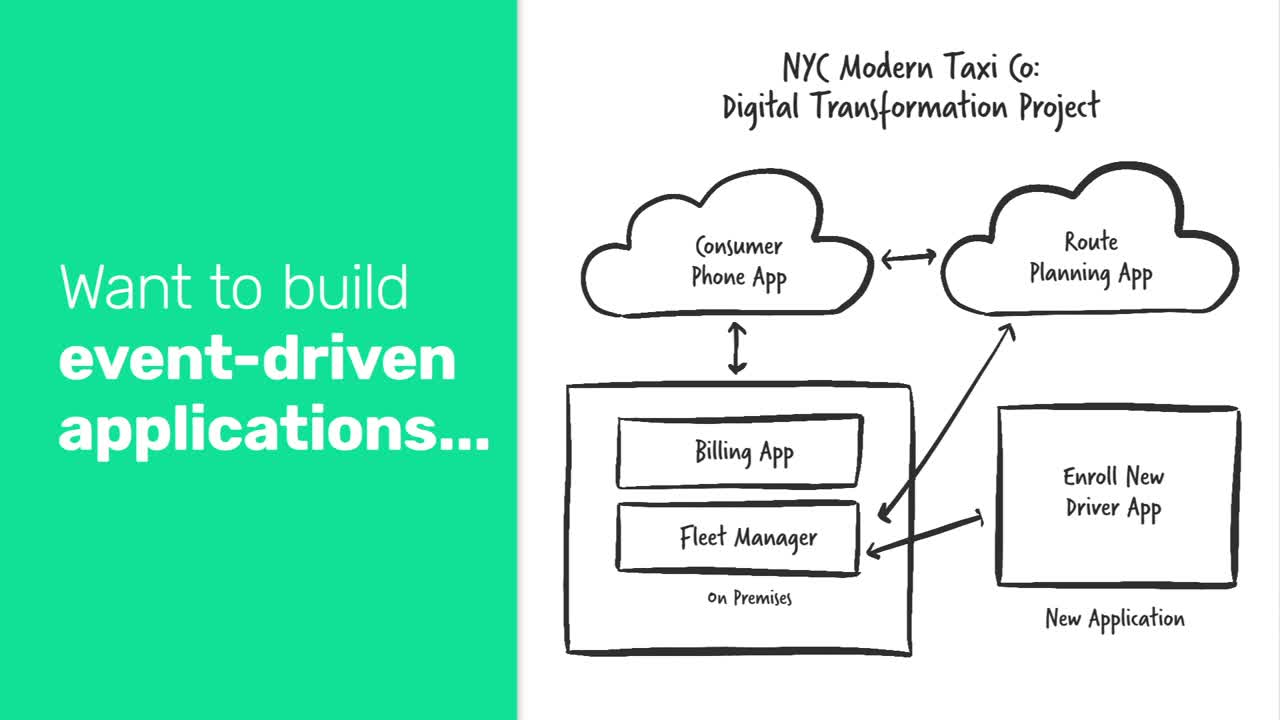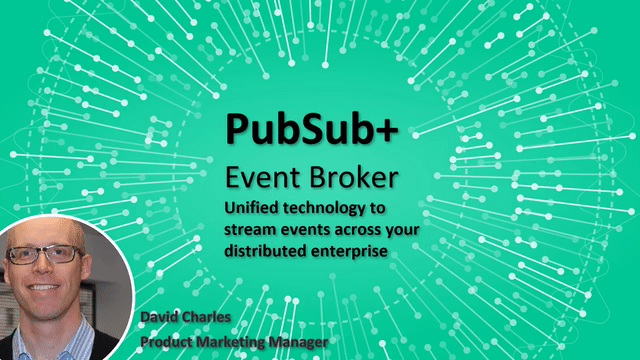PubSub+ Self-Guided Evaluation Microsite
Your event-driven journey begins here.Let's get started.


A complete event streaming and management platform for the real-time enterprise.

PubSub+ Platform gives enterprises everything they need to design, deploy and manage event-driven architecture across hybrid cloud, multi-cloud and IoT environments so they can act in real-time and deliver captivating digital experiences.
Platform Overview Platform Demo Platform Datasheet Try PubSub+
Power your event-driven transformation with advanced unified brokers you can deploy anywhere to form an event mesh and share event data across your distributed enterprise.
Use our APIs for the most popular programming languages or use your favorite open APIs and protocols so you can connect to any application, take a best-in-class approach to messaging, and never get locked in to any technology — including ours.

Why PubSub+ is the World’s Best Event Broker for Adopting Event-Driven Architecture
Solace PubSub+ Event Portal Overview
Like API management for your event-driven architecture, PubSub+ Event Portal unlocks the full value of event-driven architecture with an event management tool that allows you to visualize, optimize, and govern event flow across your distributed enterprise.
Design events and event-driven apps with best practices built-in. Discover and catalog events from across your enterprise so they can be reused internally and externally. And create Event API products to expose events to external business units and partners.
Event Portal.
The first product of its kind.
Event Mesh.
The term now gaining traction started here.
A central control plane.
Your EDA command center to:
Solace extends the value of Boomi’s industry-leading integration platform with enterprise-grade event streaming and event management capabilities that extend across hybrid, multi-cloud and IoT environments.
Together, Boomi and Solace PubSub+ provide a cloud-native, enterprise-grade and event-driven integration solution, enabling every person, application and device in an enterprise to be notified when something they are interested in happens, as it happens.
Solace has partnered with providers of leading IaaS and PaaS technologies, along with the major public cloud providers, so you can seamlessly connect applications running in a diverse set of private clouds, public clouds and on-premises.
Solace has developed a robust library of connectors to link on-premises legacy applications with cloud-native services in a low-code/no code fashion. This includes native integration between our event broker and cloud-native services in GCP, AWS and Azure using REST and more robust connectors for Apache Kafka, Apache Beam, Databricks, Apache Spark, and the AWS API Gateway.
With PubSub+ and an event mesh, you can easily migrate on-premises functional workloads to cloud, enable cloud-to-cloud integration, enhance on-premises applications with cloud-native services, or build event-driven microservices.
PubSub+ is not an open-source product. However, Solace does offer Solace Labs, a GitHub repository with community-supported open-source projects that offer integration with, and ways to use, Solace products.
Yes. PubSub+ Event Portal supports AsyncAPI code generation for event-driven APIs and API products.
You can learn more about PubSub+ and AsyncAPI here
We think that asynchronous event distribution is well worth it for a variety of reasons. The real-time distribution of events goes a long way towards creating organizational efficiencies and meeting modern customer expectations. Decoupling producing and consuming applications makes for a more flexible and agile infrastructure that makes it faster and easier to innovate and integrate.
And the experts agree. In fact, Gartner has projected that “By 2020, 50% of organizations managing APIs will incorporate event-driven APIs in their architecture.” (Source: Gartner “The Impact of Event-Driven IT on API Management”, 9 April 2020, Mark O’Neill, Paolo Malinverno)
Message Replay is a Solace PubSub+ feature that allows an event broker to resend messages to new or existing clients that request them, hours or even days after those messages were first received by the event broker.
With replay enabled, event brokers store persistent messages in a replay log. These messages are kept until the log is full, after which the oldest messages are removed to free space for new messages.
Replay can be performed on a queue or topic endpoint. When initiated, you can request all messages in the replay log, all messages following a specified replication group message ID, or all messages starting from a requested replay start time. From the requested starting point, the event broker will deliver, to the queue or topic endpoint, the messages from the replay log that match any subscription on that queue or topic endpoint.
Solace messages are delivered with a guaranteed quality of service. Guaranteed messages are spooled to non-volatile storage on the broker, and are kept until the broker has verified the successful delivery of those messages to all clients and downstream event brokers. Guaranteed messaging is suitable for applications where messages must be:
Solace provides enterprise messaging Application Programming Interfaces (APIs) that enable you to develop applications for use with Solace PubSub+. Each API includes sample applications, release notes and developer documentation. APIs are provided for the following languages:
Solace facilitates integration with applications, other middleware, and data movement technology with support for open APIs like JMS and OpenMAMA, and open wireline protocols such as AMQP, MQTT and REST. This allows you to get real-time data flowing between diverse applications, big data systems, cloud services and IoT devices.
Check out this video to see a demo of Solace’s multi-protocol capabilities.
In short, PubSub+ Event Broker still functions as normal even with slow consumers. For a complete explanation of how it works, check out this blog post.
We have built enterprise-grade security into every level of PubSub+ Cloud to ensure that your messaging data remains safe. Data is protected in transit, at rest, and at the system level. Solace PubSub+ Cloud has passed a Service Organizational Control (SOC) 2 Type 1 audit.
You can learn more about the security offered in PubSub+ Cloud here.